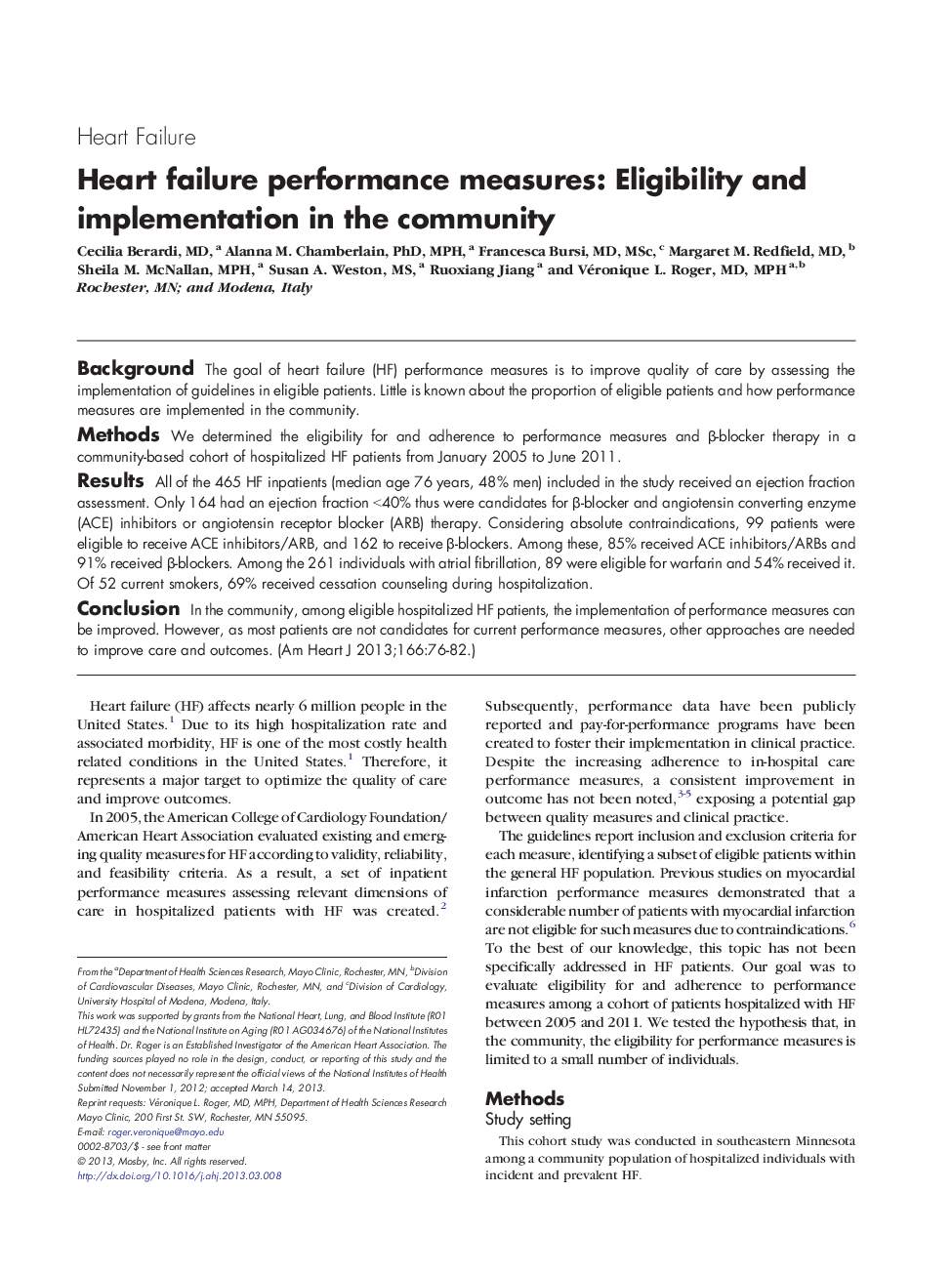| کد مقاله | کد نشریه | سال انتشار | مقاله انگلیسی | نسخه تمام متن |
|---|---|---|---|---|
| 2848823 | 1167661 | 2013 | 7 صفحه PDF | دانلود رایگان |

BackgroundThe goal of heart failure (HF) performance measures is to improve quality of care by assessing the implementation of guidelines in eligible patients. Little is known about the proportion of eligible patients and how performance measures are implemented in the community.MethodsWe determined the eligibility for and adherence to performance measures and β-blocker therapy in a community-based cohort of hospitalized HF patients from January 2005 to June 2011.ResultsAll of the 465 HF inpatients (median age 76 years, 48% men) included in the study received an ejection fraction assessment. Only 164 had an ejection fraction <40% thus were candidates for β-blocker and angiotensin converting enzyme (ACE) inhibitors or angiotensin receptor blocker (ARB) therapy. Considering absolute contraindications, 99 patients were eligible to receive ACE inhibitors/ARB, and 162 to receive β-blockers. Among these, 85% received ACE inhibitors/ARBs and 91% received β-blockers. Among the 261 individuals with atrial fibrillation, 89 were eligible for warfarin and 54% received it. Of 52 current smokers, 69% received cessation counseling during hospitalization.ConclusionIn the community, among eligible hospitalized HF patients, the implementation of performance measures can be improved. However, as most patients are not candidates for current performance measures, other approaches are needed to improve care and outcomes.
Journal: American Heart Journal - Volume 166, Issue 1, July 2013, Pages 76–82